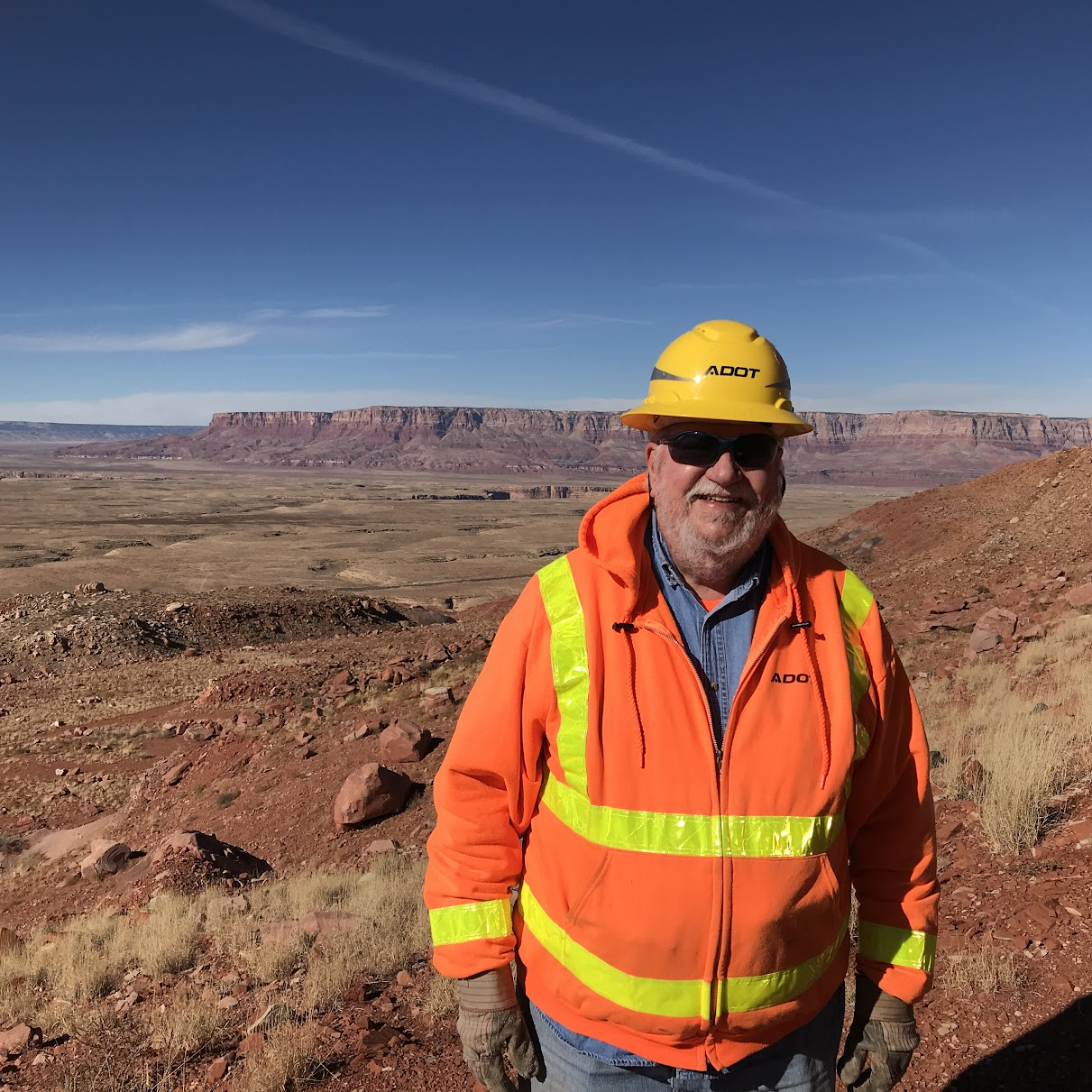Q&A with an ADOT Geologist
Q&A with an ADOT Geologist

Earth Science Week
This week is going to rock! Oct. 8-14 is Earth Science Week, a week to help people better understand Earth sciences, like geology. Did you know that ADOT has a geologist? Jim Lemmon is part of the Bridge Group’s Geotechnical Design Services in the Infrastructure Delivery and Operations Division and has worked at ADOT for more than 15 years.
In honor of Earth Science Week, we asked him a few questions about the connection between geology and transportation.
What do you do in your role at ADOT?
I respond to geologic hazards statewide to help provide potential solutions to problems like unusual slumping and cracking of the pavement, sinkholes and fissures in or adjacent to the highway, landslides and major rock falls. When I am not working on investigating geologic hazards, I collect and analyze samples of site-specific earth and rock to help explain the geological properties of bridge foundation design projects.
I am also ADOT's geological representative to a ten-year-long National Science Foundation-funded geotechnical research and education initiative at ASU, in a consortium with three other geotechnical research universities. I monitor technical progress on a Transportation Research Board geotechnical rockfall research project. And I serve on the Arizona Geological Survey geologic mapping committee, along with other state and federal agencies.
How does geology play a role in ADOT’s mission and vision?
Landslides, rockfalls and fissures that close the highway happen because of extreme weather events and susceptible geologic conditions. Responding in a safe and timely manner to get the highway back open is a shared endeavor with District Maintenance and geotechnical services. However, using geologic exploration to first recognize, prevent or minimize those geologic hazards when they could happen is perhaps the primary goal for a geologist.
Why is geology an important part of the work at ADOT?
Understanding the advantages and natural limitations of the various terrains and geologic conditions our highways are built on and maintained provides a consistently safe and resilient transportation system throughout the state. When geologic investigations are conducted in harmony with the first stages of a design project, the resulting built structures will last well into the maximum designed lifetime.
Provide an example of when geology played a key role in a project.
On Interstate 17 north of Black Canyon City, the final design solution for the I-17 Improvement Project was to widen the southbound embankment slope into the valley on the west so that additional new lanes could be safely constructed in a wider southbound geometry. From Sunset Point toward Black Canyon City, the necessary rock cuts into basalt layers for the southbound lanes produced large amounts of waste rocks. That waste rock was then used to construct a new wider slope embankment on the outside of the current southbound travel lanes. The additional excavated basalt rocks are also crushed to an aggregate size and are good for a highway sub-base foundation throughout the project.
Where are the best places to find unique rocks in Arizona?
I like rocks of all types — their mineral composition, interesting shapes and geologic origin. River banks, dry washes and stream channels are good places to see and collect rocks that have been transported downstream. Wide roadcuts (cuts through hills or mountains to build roads) are good places to observe the types of rocks that have been exposed as you travel slowly through the geologic layers.
Is there anything else you’d like people to know about geology?
We need more earth scientists, geotechnical engineers and geologists in our professions. Encourage young people to take a geology class in school.
